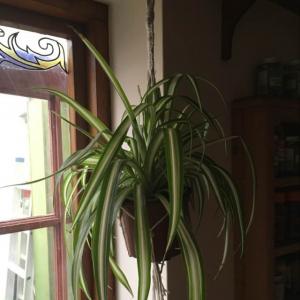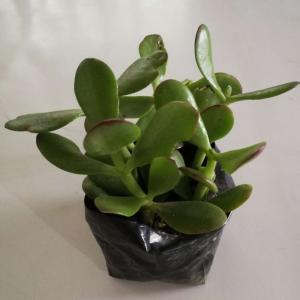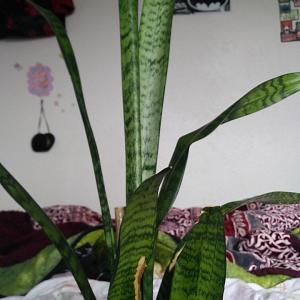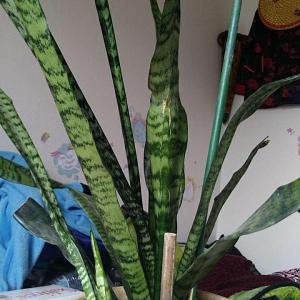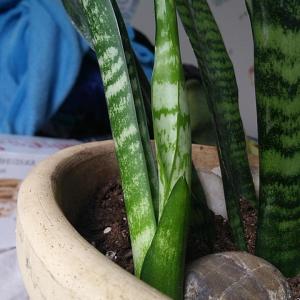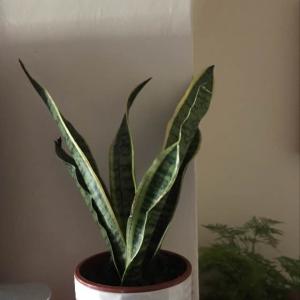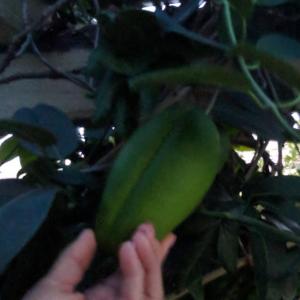文章
Miss Chen
2018年02月20日

Description: This is a herbaceous perennial plant with a central stem that is 2-6' tall. Because of the wide distribution and the existence of several varieties, there is significant variability in the characteristics of local ecotypes. The alternate leaves are about 4-6" long and 1" wide, becoming slightly smaller towards the apex of the plant. They are lanceolate to broadly linear in shape, and usually have small teeth along the margins, otherwise the margins are smooth. The stems have lines of white hairs, while the undersides of the leaves are pubescent.
Flowering Plant
Several flowering stems emerge from the top of the plant in the form of a panicle bearing masses of tiny yellow flowers in compact heads. Each flowerhead is less than ¼" across. The flowerhead occur along the upper part of each flowering stem, and sometimes have a slight fragrance. The blooming period is from late summer to fall; individual plants typically remain in bloom about 3 weeks. The achenes are longitudinally ribbed, slightly hairy, and have small tufts of hair, which help to provide dispersion by wind. The root system is fibrous, producing creeping rhizomes that cause the plants to cluster, sometimes forming dense colonies.

Cultivation: The preference is full to partial sun, and average moisture levels. This plant will tolerate some drought, in which case it will probably drop some of its lower leaves. This plant tolerates a variety of soils, perhaps even preferring a heavier soil with some clay content. During the fall, powdery mildew occasionally attacks the leaves.
Range & Habitat: The native Canada Goldenrod occurs in almost all of the counties in Illinois and it is very common (see Distribution Map). Natural habitats include disturbed areas of moist to dry prairies, openings in both floodplain and upland forests, thickets, savannas, limestone glades, and gravel seeps. In more developed areas, it occurs in both cultivated and abandoned fields, vacant lots, power-line clearance areas, and along fences, roadsides, and railroads.

Faunal Associations: A wide variety of insects visit the flowers for pollen or nectar, including long-tongued bees, short-tongued bees, wasps, flies, beetles, and a few butterflies and moths. Cross-pollination by these insects is required in order to set fertile seeds. The caterpillars of many moths feed on the foliage and other parts of this goldenrod and others (see Moth Table). A common insect that forms spherical galls on the stems is Eurosta solidaginis (Goldenrod Gall Fly). Other insects that feed on this goldenrod include Epicauta pensylvanica (Black Blister Beetle), Lopidea media (Goldenrod Scarlet Plant Bug), Lygus lineolaris (Tarnished Plant Bug), and various leaf beetles and leafhoppers. Among mammals and birds, the Prairie Chicken, Eastern Goldfinch, and Swamp Sparrow eat the seeds, while the White-Tailed Deer and Eastern Cottontail Rabbit occasionally eat the foliage (although it is not a preferred food source). In overgrazed pastures, there have been reports of a rust fungus on the leaves of goldenrod poisoning livestock during the fall. Sometimes beavers and muskrats use the stems in their dams or dens.

Photographic Location: The photographs were taken in a vacant lot along a railroad in Urbana, Illinois.
Comments: This is the most common and weedy goldenrod in Illinois. The flowers are especially attractive to many species of wasps and flies, which play an important role in controlling insect pests, or breaking down organic matter in the detritus cycle. The species Solidago altissima (Tall Goldenrod) is considered a variety of Canada Goldenrod by some authorities, while others (e.g., Mohlenbrock, 2002) treat it as a separate species. According to the latter authority, Tall Goldenrod has longer phyllaries (floral bracts) at the base of its flowerheads (exceeding 3 mm. in length), while Canada Goldenrod has shorter phyllaries (3 mm. or less). It has been reported that the foliage of Canada Goldenrod contains a volatile oil that chemically resembles the oil from pine needles. There is also some experimental evidence that this species inhibits the growth of maple seedlings, and probably other plants as well, by exuding phytotoxic chemicals through its roots.
Flowering Plant
Several flowering stems emerge from the top of the plant in the form of a panicle bearing masses of tiny yellow flowers in compact heads. Each flowerhead is less than ¼" across. The flowerhead occur along the upper part of each flowering stem, and sometimes have a slight fragrance. The blooming period is from late summer to fall; individual plants typically remain in bloom about 3 weeks. The achenes are longitudinally ribbed, slightly hairy, and have small tufts of hair, which help to provide dispersion by wind. The root system is fibrous, producing creeping rhizomes that cause the plants to cluster, sometimes forming dense colonies.

Cultivation: The preference is full to partial sun, and average moisture levels. This plant will tolerate some drought, in which case it will probably drop some of its lower leaves. This plant tolerates a variety of soils, perhaps even preferring a heavier soil with some clay content. During the fall, powdery mildew occasionally attacks the leaves.
Range & Habitat: The native Canada Goldenrod occurs in almost all of the counties in Illinois and it is very common (see Distribution Map). Natural habitats include disturbed areas of moist to dry prairies, openings in both floodplain and upland forests, thickets, savannas, limestone glades, and gravel seeps. In more developed areas, it occurs in both cultivated and abandoned fields, vacant lots, power-line clearance areas, and along fences, roadsides, and railroads.

Faunal Associations: A wide variety of insects visit the flowers for pollen or nectar, including long-tongued bees, short-tongued bees, wasps, flies, beetles, and a few butterflies and moths. Cross-pollination by these insects is required in order to set fertile seeds. The caterpillars of many moths feed on the foliage and other parts of this goldenrod and others (see Moth Table). A common insect that forms spherical galls on the stems is Eurosta solidaginis (Goldenrod Gall Fly). Other insects that feed on this goldenrod include Epicauta pensylvanica (Black Blister Beetle), Lopidea media (Goldenrod Scarlet Plant Bug), Lygus lineolaris (Tarnished Plant Bug), and various leaf beetles and leafhoppers. Among mammals and birds, the Prairie Chicken, Eastern Goldfinch, and Swamp Sparrow eat the seeds, while the White-Tailed Deer and Eastern Cottontail Rabbit occasionally eat the foliage (although it is not a preferred food source). In overgrazed pastures, there have been reports of a rust fungus on the leaves of goldenrod poisoning livestock during the fall. Sometimes beavers and muskrats use the stems in their dams or dens.

Photographic Location: The photographs were taken in a vacant lot along a railroad in Urbana, Illinois.
Comments: This is the most common and weedy goldenrod in Illinois. The flowers are especially attractive to many species of wasps and flies, which play an important role in controlling insect pests, or breaking down organic matter in the detritus cycle. The species Solidago altissima (Tall Goldenrod) is considered a variety of Canada Goldenrod by some authorities, while others (e.g., Mohlenbrock, 2002) treat it as a separate species. According to the latter authority, Tall Goldenrod has longer phyllaries (floral bracts) at the base of its flowerheads (exceeding 3 mm. in length), while Canada Goldenrod has shorter phyllaries (3 mm. or less). It has been reported that the foliage of Canada Goldenrod contains a volatile oil that chemically resembles the oil from pine needles. There is also some experimental evidence that this species inhibits the growth of maple seedlings, and probably other plants as well, by exuding phytotoxic chemicals through its roots.
0
0
文章
Miss Chen
2018年02月20日

Description: This herbaceous perennial plant is up to 3' tall, branching occasionally. The stems have scattered white or yellow spines. The alternate leaves are up to 6" long and 3" across, and have short petioles. They are broadly lanceolate or ovate, but rather angular along the margins, which are slightly ciliate. There are white hairs and scattered spines along the central vein on the underside of each leaf.
The upper stems terminate in small clusters of star-shaped flowers with hairy pedicels. These flowers are white or light violet, about ¾" across, and have 5 petals that are united at the base. Near the center, there are 5 elongated yellow anthers that are very prominent. There is no noticeable floral scent. The blooming period can occur from early summer to early fall, and typically lasts about 1½ months. Afterwards, round fruits develop that are a little more than ½" across and half-enclosed by a papery calyx. They become yellow when mature, but are not edible to humans. Each fruit contains numerous seeds that are glossy yellow and flattened. The root system has creeping underground rhizomes, which are responsible for the vegetative spread of this plant.

Cultivation: The preference is full sun and moist to dry conditions. Horse Nettle grows readily in loamy or sandy soil, and probably other soil types as well. It is a rather weedy plant that can become aggressive at disturbed sites.
Range & Habitat: The native Horse Nettle occurs in every county of Illinois and it is very common (see Distribution Map). Habitats include mesic to dry black soil prairies, clay prairies, sand prairies, openings and edges of woodlands, abandoned fields, areas along roadsides and railroads, yards and gardens, vacant lots, and other waste areas. This plant is most typically observed in disturbed areas, but it can be found occasionally even in high quality habitats.

Faunal Associations: Bumblebees visit the flowers to collect pollen, using 'buzz pollination,' which involves the rapid vibration of thoracic muscles. The caterpillars of the day-flying moth Synanthedon rileyana (Riley's Clearwing) feed on Horse Nettle. This moth is a wasp mimic. The mature yellow fruits are eaten, to a limited extent, by the Ring-Necked Pheasant, Bobwhite, Wild Turkey, Eastern Striped Skunk, and possibly small rodents, thereby promoting the distribution of the seeds and spread of this plant. They are apparently more immune to the reduced toxicity of the mature fruit than humans. Experimental studies have shown that the seeds can pass unharmed through the digestive tracts of livestock. Mammalian herbivores avoid eating the stems and foliage of this plant because of their scattered spines and toxicity; the latter is the result of solanum, an alkaloid compound that also occurs in other members of the Nightshade family.

Photographic Location: The photographs were taken at the webmaster's apartment complex in Urbana, Illinois, and a gravelly area along a railroad in Champaign, Illinois.
Comments: Horse Nettle is widely regarded as a weed with some justication, but it is also one of the native wildflowers of the prairie. The fruits are benefical to wildlife. Because of the intense competition among plants and their root systems, this plant is less aggressive in prairie habitats than in disturbed sites around developed areas.
The upper stems terminate in small clusters of star-shaped flowers with hairy pedicels. These flowers are white or light violet, about ¾" across, and have 5 petals that are united at the base. Near the center, there are 5 elongated yellow anthers that are very prominent. There is no noticeable floral scent. The blooming period can occur from early summer to early fall, and typically lasts about 1½ months. Afterwards, round fruits develop that are a little more than ½" across and half-enclosed by a papery calyx. They become yellow when mature, but are not edible to humans. Each fruit contains numerous seeds that are glossy yellow and flattened. The root system has creeping underground rhizomes, which are responsible for the vegetative spread of this plant.

Cultivation: The preference is full sun and moist to dry conditions. Horse Nettle grows readily in loamy or sandy soil, and probably other soil types as well. It is a rather weedy plant that can become aggressive at disturbed sites.
Range & Habitat: The native Horse Nettle occurs in every county of Illinois and it is very common (see Distribution Map). Habitats include mesic to dry black soil prairies, clay prairies, sand prairies, openings and edges of woodlands, abandoned fields, areas along roadsides and railroads, yards and gardens, vacant lots, and other waste areas. This plant is most typically observed in disturbed areas, but it can be found occasionally even in high quality habitats.

Faunal Associations: Bumblebees visit the flowers to collect pollen, using 'buzz pollination,' which involves the rapid vibration of thoracic muscles. The caterpillars of the day-flying moth Synanthedon rileyana (Riley's Clearwing) feed on Horse Nettle. This moth is a wasp mimic. The mature yellow fruits are eaten, to a limited extent, by the Ring-Necked Pheasant, Bobwhite, Wild Turkey, Eastern Striped Skunk, and possibly small rodents, thereby promoting the distribution of the seeds and spread of this plant. They are apparently more immune to the reduced toxicity of the mature fruit than humans. Experimental studies have shown that the seeds can pass unharmed through the digestive tracts of livestock. Mammalian herbivores avoid eating the stems and foliage of this plant because of their scattered spines and toxicity; the latter is the result of solanum, an alkaloid compound that also occurs in other members of the Nightshade family.

Photographic Location: The photographs were taken at the webmaster's apartment complex in Urbana, Illinois, and a gravelly area along a railroad in Champaign, Illinois.
Comments: Horse Nettle is widely regarded as a weed with some justication, but it is also one of the native wildflowers of the prairie. The fruits are benefical to wildlife. Because of the intense competition among plants and their root systems, this plant is less aggressive in prairie habitats than in disturbed sites around developed areas.
0
0
文章
Miss Chen
2018年02月20日

Description: This perennial plant is ½–1' tall, forming a a tuft of linear basal leaves with smooth margins. The basal leaves are 2-3 mm. across, flattened, pale green, and glabrous. One or more flowering stalks develop from among the basal leaves; these stalks are about the same length or somewhat taller than the leaves. The linear stalks are 1-2 mm. across, pale green, and glabrous; each stalk has a stiff raised ridge that runs along the flattened sides of its length. Each stalk produces a pair of sessile claw-like bracts (or spathe) near its apex, between which a single umbel of flowers occurs. The outer bract is ¾-1" long, while the inner bract is ½-¾" in length (sometimes the inner bract isn't distinct from the flowering stalk during the early stage of its development). Both bracts are some shade of pale green, pinkish purple, or brownish purple; they are linear-lanceolate in shape, slightly curved, and usually glabrous. The outer bract is somewhat swollen at its base. Each umbel has 3-6 flowers on slender pedicels that are about the same length as the bracts. The flower buds are hairy and nodding, while flowers in bloom are held more erect. Each flowers is up to ½" across, consisting of 6 tepals that are blue-violet, light blue, or white, and a yellow spike-like structure in its center that contains the reproductive organs. Near the center of the flower, the tepals are yellow. The tepals are oblong-elliptic in shape and they taper abruptly into short narrow tips. The blooming period occurs from late spring to early summer, lasting about 3 weeks. There is no noticeable floral scent. The flowers are replaced by 3-celled seed capsules. At maturity, these capsules are about 3 mm. long, ovoid-globoid in shape, and glabrous. Eventually, each capsule splits open into 3 sections to release the small dark seeds. The seeds are small enough to be dispersed a limited distance by gusts of wind. The root system is coarsely fibrous, and new plants can develop vegetatively from adjacent offsets.
Cultivation: The preference is full sun and mesic to dry conditions. The soil can contain significant amounts of loam, rocky material, or sand. This species of Blue-Eyed Grass is more drought-resistant than most of the others. Foliar disease is rarely a problem. While this plant can slowly spread by forming larger clumps, it is not aggressive.
Range & Habitat: Prairie Blue-Eyed Grass occurs primarily in western and northern Illinois, where it is fairly uncommon; in other parts of the state, this plant is rare or absent (see Distribution Map). Habitats include mesic to dry black soil prairies, sand prairies, hill prairies, savannas, limestone glades, sandy meadows in wooded areas, abandoned fields, and areas along railroads. This plant is usually found in high quality habitats.
Faunal Associations: The flowers are visited primarily by short-tongued bees, including Halictid bees and masked bees (Hylaeus spp.), where they seek nectar and pollen. Syrphid flies also visit the flowers, where they feed primarily on stray pollen. The Wild Turkey and Greater Prairie Chicken eat the seed capsules and/or foliage to a limited extent.

Photographic Location: The photographs were taken at Prospect Cemetery Prairie in Ford County, Illinois.
Comments: It can be difficult to distinguish the different species of Blue-Eyed Grass. The white form of Prairie Blue-Eyed Grass (as illustrated in the photographs) is quite similar in appearance to Sisyrinchium albidum (White Blue-Eyed Grass). Like most Sisyrinchium spp., Prairie Blue-Eyed Grass produces a single umbel of flowers between a pair of bracts on each flowering stalk, while White Blue-Eyed Grass produces 2 pairs of bracts with 2 umbels of flowers on each flowering stalk. White Blue-Eyed Grass also has slightly larger seed capsules and slightly wider leaves and flowering stalks. When Prairie Blue-Eyed Grass has blue-violet flowers, it can be confused with other Sisyrinchium spp. Generally, Prairie Blue-Eyed Grass has leaves and flowering stalks that are no wider than those of other species, and it never produces secondary flowering stalks from the primary flowering stalks that originate from among the basal leaves. The common name for this genus, Blue-Eyed Grass, is something of a misnomer because the flowers, whether white or blue-violet, have yellow centers.
Cultivation: The preference is full sun and mesic to dry conditions. The soil can contain significant amounts of loam, rocky material, or sand. This species of Blue-Eyed Grass is more drought-resistant than most of the others. Foliar disease is rarely a problem. While this plant can slowly spread by forming larger clumps, it is not aggressive.
Range & Habitat: Prairie Blue-Eyed Grass occurs primarily in western and northern Illinois, where it is fairly uncommon; in other parts of the state, this plant is rare or absent (see Distribution Map). Habitats include mesic to dry black soil prairies, sand prairies, hill prairies, savannas, limestone glades, sandy meadows in wooded areas, abandoned fields, and areas along railroads. This plant is usually found in high quality habitats.
Faunal Associations: The flowers are visited primarily by short-tongued bees, including Halictid bees and masked bees (Hylaeus spp.), where they seek nectar and pollen. Syrphid flies also visit the flowers, where they feed primarily on stray pollen. The Wild Turkey and Greater Prairie Chicken eat the seed capsules and/or foliage to a limited extent.

Photographic Location: The photographs were taken at Prospect Cemetery Prairie in Ford County, Illinois.
Comments: It can be difficult to distinguish the different species of Blue-Eyed Grass. The white form of Prairie Blue-Eyed Grass (as illustrated in the photographs) is quite similar in appearance to Sisyrinchium albidum (White Blue-Eyed Grass). Like most Sisyrinchium spp., Prairie Blue-Eyed Grass produces a single umbel of flowers between a pair of bracts on each flowering stalk, while White Blue-Eyed Grass produces 2 pairs of bracts with 2 umbels of flowers on each flowering stalk. White Blue-Eyed Grass also has slightly larger seed capsules and slightly wider leaves and flowering stalks. When Prairie Blue-Eyed Grass has blue-violet flowers, it can be confused with other Sisyrinchium spp. Generally, Prairie Blue-Eyed Grass has leaves and flowering stalks that are no wider than those of other species, and it never produces secondary flowering stalks from the primary flowering stalks that originate from among the basal leaves. The common name for this genus, Blue-Eyed Grass, is something of a misnomer because the flowers, whether white or blue-violet, have yellow centers.
0
0
cclecombe
2018年02月18日

The pot our ZZ plant was in had become water logged and the bulbs were beginning to rot. because we didnt have one big pot with drainage holes in, I’ve separated them into smaller pots that do. Hopefully they’ll do better now.






0
0
成长记
BeautifullyMad
2018年02月17日

I now added "Snake Plant - Sansevieria Trifasciata" in my "garden"
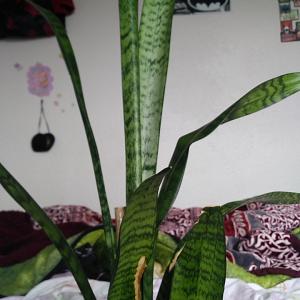

0
0
成长记
BeautifullyMad
2018年02月17日

I now added "Snake Plant - Sansevieria Trifasciata" in my "garden"
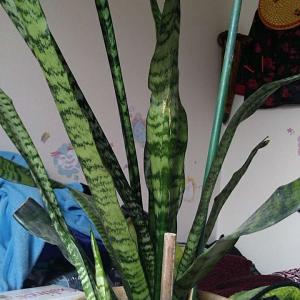

0
0


